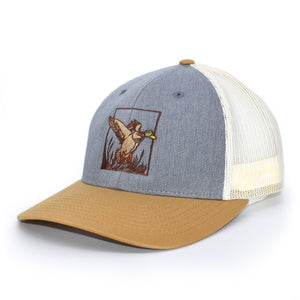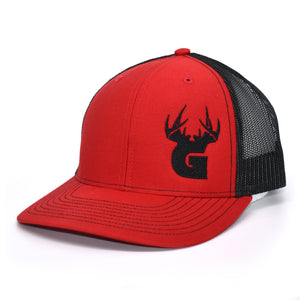Where the East ends and the West begins depends on where you might be standing at a particular moment in time, and your eagerness to debate the delineation. For me it was the first time I drove across the Missouri River bridge at Chamberlain, S.D., on my first deer hunt The cornfields of eastern South Dakota disappeared in the rear view mirror as our old International Scout plunged into a new world. Chiseled, cedar-studded river breaks were the gateway to yucca draws, lunar-like badlands and the pine-covered mountains beyond.
Both flavors of deer inhabited the vacant landscape, but from that road trip decades ago till this day, whitetail pursuits make up the majority of my Western deer hunts. Theodore Roosevelt eloquently describes the allure of the West in a letter written in the classic Western setting of the North Dakota Badlands: “I heartily enjoy this life, with its perfect freedom, for I am very fond of hunting, and there are few sensations I prefer to that of galloping over these rolling limitless prairies, with rifle in hand, or winding my way among the barren, fantastic and grimly picturesque deserts of the so-called Bad Lands … .”
Always a Fixture of the West
Some hunters view whitetails as a fixture held firmly in easterly locales by the confines of the mighty Missouri. Muleys hold the lease to lands west. That general boundary works for muleys unable to find necessary environmental elements for survival to the east. It doesn’t work for whitetails that were already a constant in the Western topography well before the first European pioneer plowed a new furrow in the region.
As early as May 10, 1805, journal notes by Meriwether Lewis in Montana mentioned the presence of white-tailed deer in the West. The notes described a successful hunt for “two Mule deer, one common fallow or longtailed deer,” later to be identified as the Dakota subspecies of whitetail.
Today, Western whitetail hunters frequent the plains, foothills and mountains of Colorado, Idaho, Montana, Oregon, Wyoming and Washington with populations to pursue. The remaining Western states have either limited densities or subspecies, such as the Coues whitetail.
Understanding their needs and adaptability gives you a jumpstart as you look at a chunk of country with hopes of meeting a whitetail. Here are some twists to make that meeting more probable
Find the Deer
Don’t be fooled by the reports of locals claiming that carpetbagger whitetails are everywhere. You may find them in heavily populated pockets, but lower overall densities require you to search with purpose. This rings true for public-land hunters contained even further by boundaries combined with environmental factors.
Locations like Idaho and northeastern Washington include massive acres of timber. Those deer will still adhere to an edge lifestyle, but those edges could be subtle in the form of parks, wetlands or valley meadows that may be off limits due to private ownership in lowlands. View the location from above and with topographical assistance. Satellite imagery can reveal concealed openings, and the topo support may reveal benches and saddles deer could use to avoid steep travels from mountain to mountain. Benches also serve as good resting places for whitetails during the midday while not rutting.
Prairies and foothills don’t require nearly as much trail-camera maintenance, but they do require eyeball time behind optics. Whitetails could be living in the lap of luxury on a cottonwood bottom surrounded by hayfields re-energized from a fall rain to sprout browse “longtails” can’t ignore.
Unfortunately, whitetails also live in the broken openness of eastern Colorado or other territories that saddle up to the looming Rockies. Many of these locations have a uniform appearance. I once went after a double drop-tine whitetail that lived amongst dinosaur bone beds in badland geography not far from the Black Hills. The cagey buck rarely visited a tilled field and would hide as easily as a Tyrannosaurus could in the sedimentary rocks and clay castles of its homeland. Shed antlers were all I ever saw of the brute, but I heard two years after my try the buck slipped up on an extended rutting foray, making one public-land hunter mighty happy.
Know Which Side of the Fence You May Hunt
Knowing where you stand not only keeps you from becoming a mission for a Western search-and-rescue team; it could also keep you free of a trespassing charge. It’s not uncommon at all to hunt public parcels that intermix with private holdings without fence lines to guide you. Plus, it’s common for property owners to fence for convenience, not according to surveys. Your public property could extend beyond a posted fence line or vice versa. Having accurate coordinates is imperative, and that means relying on either your GPS or smartphone to relay that information to you instantly.
One of the leaders in property ownership information is OnXmaps. This pioneering company offers access to property ownership, hunting unit information, topography and aerial imagery. Information can be accessed via cellular service or downloaded. Garmin GPS, Apple, Android and home-based Web platforms all offer accessibility. You can have access anywhere regardless of cellular service simply by saving the maps you need to your device.
Stay on Your Feet
“I can’t believe the deer are out in broad daylight!”—that’s a common response from visitors to the West during any season. Even when harvest befalls the limitless cover of crops in traditional whitetail country, most times it still doesn’t make finding whitetails easy in the open or strip environments.
Keep that important behavioral factor in mind while hunting Western whitetails. There’s no need to return to camp or town for a midday siesta if you know deer are in the neighborhood. They’ll move on and off all day long. Sometimes hunting pressure could urge them to move about inside cover, but they could just as easily visit an opening at midday. Wintry weather could slow the dance moves a bit. Regardless, I’ve taken my fair share of big bucks at high noon and during ground blizzard conditions. Stay out until you tag out or the state shuts down the roads.
Crawling and Other Craziness
You’ve heard all the accolades for being fit, but for Western whitetails it’s more than just an ad for a gym membership. Despite millions of acres of national forest, BLM, state and wildlife refuge lands available to hunt, the majority see pressure. Nevertheless, as studies suggest, most hunters only push 1 mile past the trailhead. You need to go farther, deeper and more remote. That doesn’t mean leaving civilization behind. Some of the best public-land whitetail hunting I’ve discovered took me an hour or more to access, but its productivity was based on circling to an outside edge of public canyons that overlooked private hayfields. Whitetails fed on the private land but raced to the rough country at daybreak for shelter. You don’t get to locations like that by spending your off hours binging on Netflix and Krispy Kreme donuts.
Another reason for being fit includes the aspect of crawling. Western whitetails look for vertical figures, especially in the foothills or plains. More common than a windy day in the West is having to drop to your belly and crawl the last 30 to 100 yards to reach a rise and shoot. Walking upright with the possibility of silhouetting your form is sure to send those white tails flagging. Crawling on your belly requires upper- and lower-body strength not acquired by pushing buttons on your TV remote.
Training to Shoot the West
The fear of taking a long shot may surge through you while contemplating a venture west. Those endless views and expansive distances can be worrisome. Being fit and flexible provides you some comfort in ducking behind terrain and halving the distance, but you should also test your shooting proficiency.
Set up targets at distances you’d feel comfortable assessing and engage each with three-shot groups. Your cartridge will dictate how far you should test as your projectile will need to hit with approximately 1,000 ft.-lbs. for most bullets to expand accordingly. That could mean testing out to 600 yards to see if you can consistently hit a basketball-sized target.
Intense training sessions move from the classroom to the field with more than 50 targets cloaked and scattered from 100 to 1,400 yards. Instruction includes understanding mils, reading wind via mirage, and how to set up for maximum stability and overwatch.



















